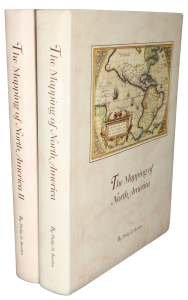Rare Maps and Prints
- World & Celestial
- North America
- West Indies, South & Central America
- British Isles
- British Isles
- English counties
- Large-scale
- Bedfordshire
- Berkshire
- Buckinghamshire
- Cambridgeshire
- Cheshire
- Cornwall
- Cumberland
- Derbyshire
- Devon
- Dorset
- Durham
- Essex
- Gloucestershire
- Hampshire
- Herefordshire
- Hertfordshire
- Huntingdonshire
- Islands
- Kent
- Lancashire
- Leicestershire
- Lincolnshire
- Middlesex
- Norfolk
- Northamptonshire
- Northumberland
- Nottinghamshire
- Oxfordshire
- Rutland
- Shropshire
- Somerset
- Staffordshire
- Suffolk
- Surrey
- Sussex
- Warwickshire
- Westmoreland
- Wiltshire
- Worcestershire
- Yorkshire
- Wales
- Scotland
- Ireland
- Western Europe
- Eastern Europe
- Middle East
- Africa
- Asia
- Australasia & Pacific
- Decorative Prints
- Title Pages
Mr. Philip D. Burden
P.O. Box 863,
Chalfont St. Giles, Bucks HP6 9HD,
UNITED KINGDOM
Tel: +44 (0) 1494 76 33 13
Email: enquiries@caburden.com
“In the early 1660s tension between England and Holland was growing, and English claims to the New Netherlands were being made, supported by the voyage of John Cabot in the fifteenth century. At this time there would have been considerable renewed interest in the area. In 1664 the English successfully captured New Amsterdam and renamed it New York. It would remain in their possession, barring a brief period in 1673-74. It is unlikely that a Dutch map would have been produced of the area during this English period.” (Burden).
The first state is derived from the Nicolaas Visscher of c.1655, itself based upon the Joannes Janssonius of 1651. “The most recognisable feature of the first state is that it is the only one to bear the ‘Visscher’ view of New Amsterdam. In its second state the Restitutio view replaced it. This was to celebrate the ‘restoration’ of New Amsterdam to Holland, in August 1673, by the fleet under the command of Cornelius Evertsen. This state was clearly produced shortly after this date as the view bears the title ‘Nieuw-Amsterdam onlangs Nieuw Jorck genaemt, en nu hernomen bij de Nederlanders op den 24 Aug 1673’. It would not have been produced after November 1674 when the city was returned to England under the Treaty of Breda, in exchange for the colony of Surinam. Evidence from the view itself indicates that it was probably drawn after October 1673, although it is not as accurate as the earlier Visscher view. An increase in the size of the city can be seen, with a wall constructed at the waterfront. The area near the wall is not known to have been so built up at this time. The figure on the pedestal is holding a laurel of victory.” (Burden).
The completed third state includes the imprint of Hugo Allard lower right. The old title is removed and replaced by one across the top of the map which resulted in the loss of Quebec. Fort Orange is renamed ‘Nova Albania’ and Evertsen’s fleet is depicted off Long Island. ‘NIEU JARSEY’ and ‘NIEUW JORCK’ are named, and a key appears south of Long Island. Augustyn & Cohen (1997) pp. 46-7; Burden (1996) no. 373, state 2; Campbell (1965) pp. 287-9 nos. 14-20; Deák (1988) no. 54; Koeman (1967) vol. 1 pp. 31-2 & vol. 3 pp. 85-7; Stokes (1915) vol. 1 pp. 152-4, 221-2 & pl. 8 (compares the two views) also vol. 3 p. 861; Tooley & Bricker (1976) p. 224 (illustrating the then only recorded example of the second state in large scale).
Totius Neobelgii Nova et Accuratissima Tabula
SOLD






